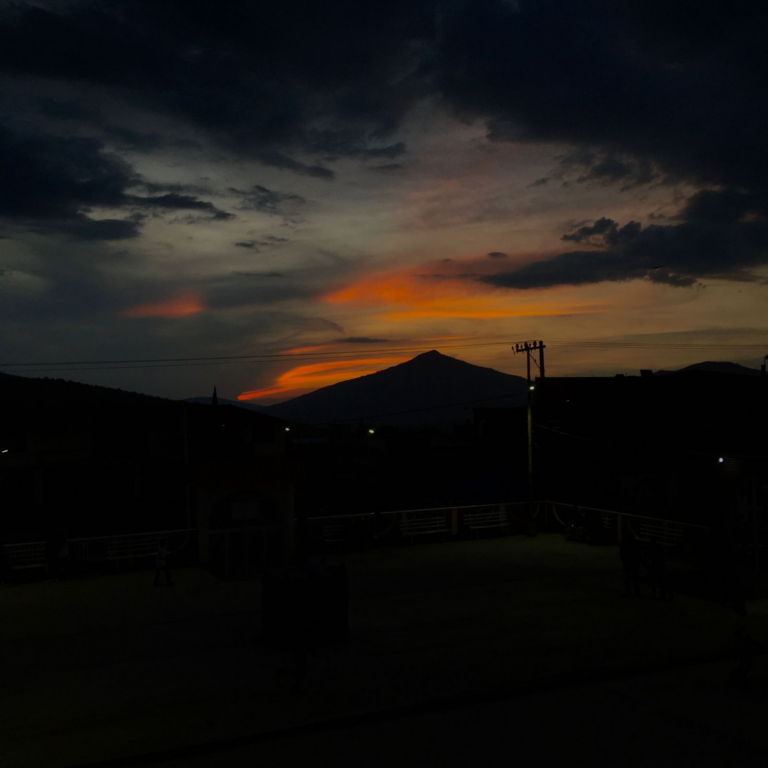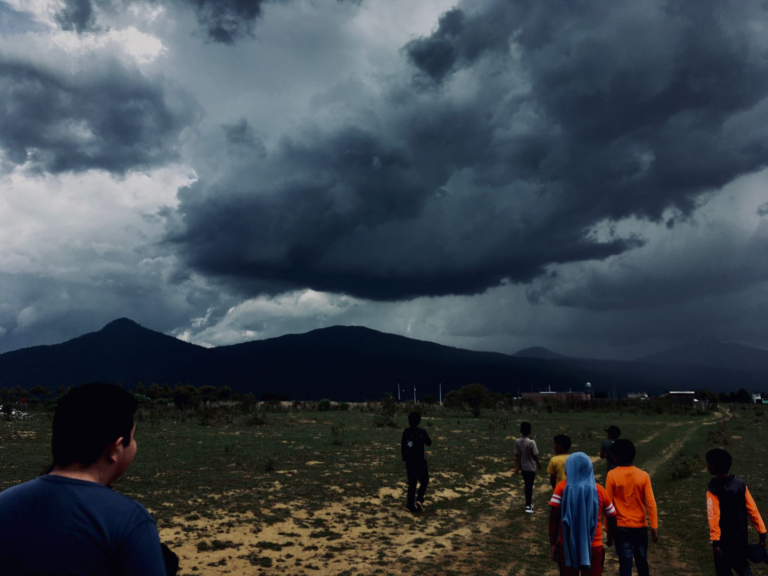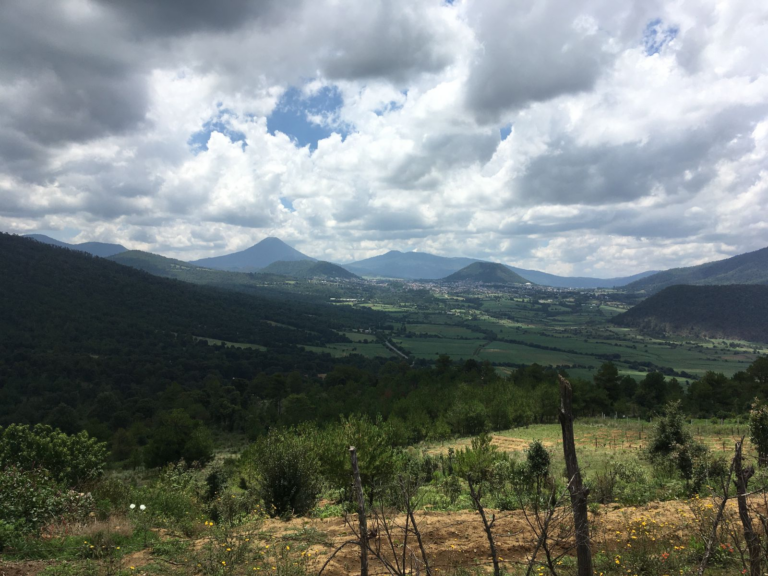In 2023, the leaders of the musical groups SONAR Las Joyas from León, Guanajuato, and Tarhiata Jimpanhe from Cherán Atzicuirin—both ensembles made up of children and youth—organized a musical encounter in both cities. Cheranastico served as the first host of this event.
León, Guanajuato, is a city defined by its industrial and economic orientation throughout its history. The expansion of urban sprawl has led to the destruction of flora and fauna, making encounters with nature an increasingly rare phenomenon for its inhabitants. For these reasons, my visit to Cherán Atzicuirin—a world completely different from what I had known—was a life-changing experience.
Encounter
Arriving in the community was like opening a window to an entirely new world: from the breathtaking views of mountains draped in morning mist, to the vast, eye-pleasing forests, to the clear, unpolluted nights free from smog and light pollution, and finally to its people, with whom I forged bonds that went far beyond mere words.
The constant presence of nature in the daily life of the community is something utterly foreign to my hometown. Living in harmony with nature is an integral part of their lives and daily activities. Moreover, the pace of life I experienced and observed during my stay was much slower and more serene than the immediacy of urban life in León. This contrast led me to reflect on the differences in lifestyles between the two places.



Although my time there was brief and did not allow me to delve deeply into the culture, lifestyle, and traditions of the place, I was nonetheless astonished and enchanted by the wealth of information shared by several community members. I was fascinated by the complexity of the Purépecha language and its regional variations. Their customs and traditions—evident in their community temple, which housed religious images adorned in ways unfamiliar to me as someone from León, and in the diverse resources within the church—clearly illustrate the differences and complexities between the religious practices of Cherán Atzicuirin and León. Their beautiful traditional garments (shawls, shirts, dresses), the intricate craftsmanship required to create each piece, and the deep social and cultural meanings they carry further underscore these differences.
Their social organization, as a self-governing community, is entirely different from what I am accustomed to—not only in terms of social and political structures but also in the manner in which they elect their representatives. And their food? There is no better way to describe it briefly and succinctly than to say, “It is one of the best meals of my life.”
All of these experiences were just a few of the many aspects I observed during my short stay. Although my understanding is limited compared to all that remains to be discovered, one thing is clear: daily life in Cherán Atzicuirin is deeply enriched by culture and community.
The more I know
Since returning to my hometown, my curiosity and desire to learn more about this community have only grown. In my opinion, it is impossible to know a place completely from every perspective, yet I hope for an opportunity to find answers to the questions I have now—and to those that may arise in the future.
It is important to revisit the point mentioned at the beginning of this article: the musical encounter between these two groups sparked a series of events that demonstrated that, despite their many differences, nothing stood in the way of forming profound bonds through music and shared words. Studying and conveying the essence of this cultural encounter is no easy task, but the constant thread throughout all these experiences was music—the reason we gathered, the reason we learned about one another, and the reason that allowed me to see those mist-clad mountains, starry nights, hear traditional sones composed by community members, and share moments with the wonderful people of Cherán Atzicuirin.
My visit to Cherán Atzicuirin marked a turning point in my perspective and raised many questions about the way I view León. One significant reflection was to question the exclusively industrial focus that León has maintained throughout its history—the daily challenges that come with it and the developmental path the city is now following.







